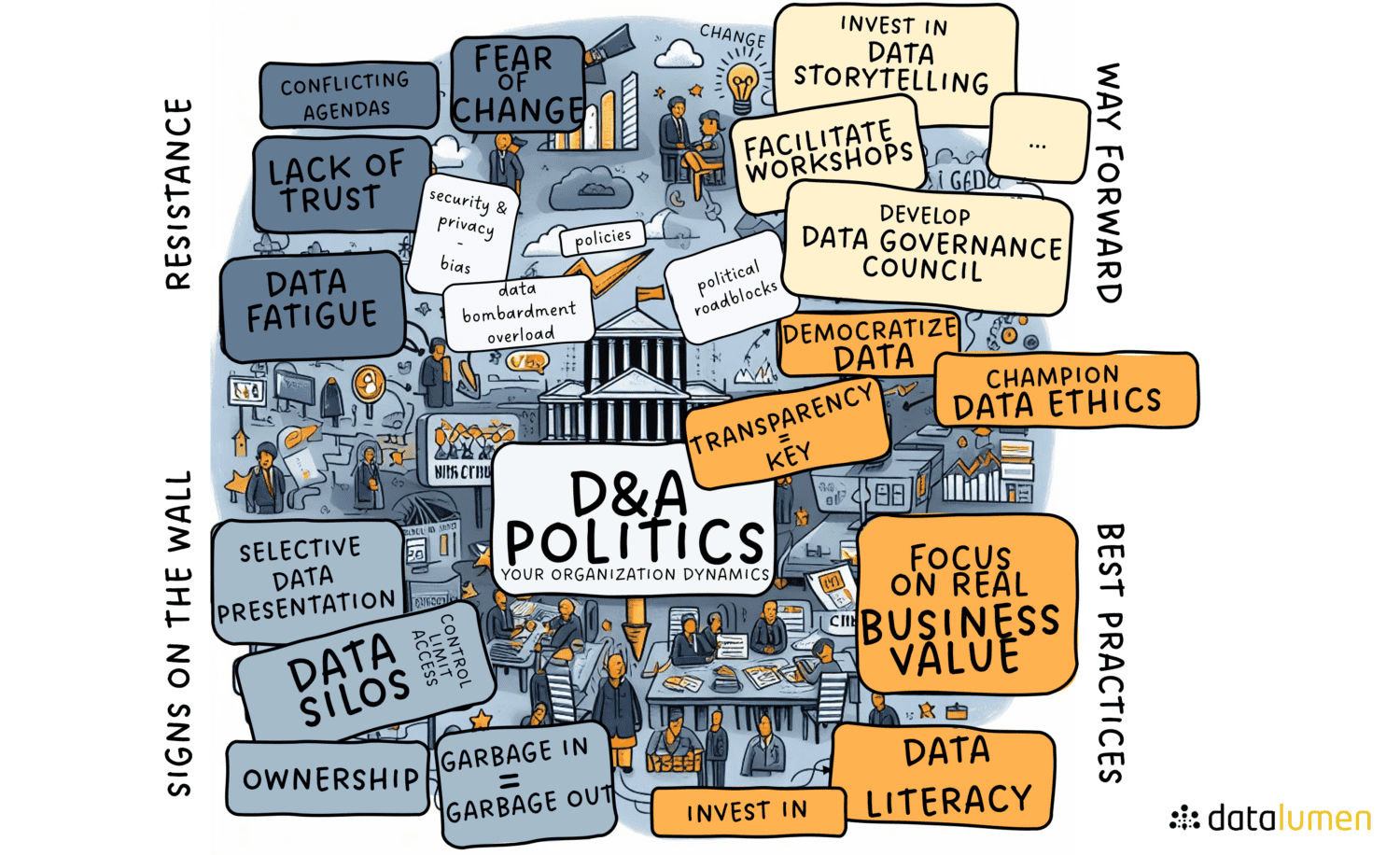HOW IMPERFECTION FUELS DATA-DRIVEN ORGANIZATIONS – FROM A ‘GRAND SLAMS’ TO A ‘FAST WINS’ APPROACH
Embracing Imperfection
What exactly does embracing imperfection look like in a data office? Here are a few key ideas:
- Small Wins over Grand Slams: Don’t wait to have a perfect answer to every question. Instead, focus on making smaller discoveries through data that can lead to actionable insights. These “small wins” can add up over time and provide valuable feedback for future analysis.
For example, a data office might be tasked with analyzing customer churn for a subscription service. Instead of waiting to build a complex model that predicts exactly which customers will cancel, they could start by identifying basic patterns. They might discover that a high percentage of cancellations occur within the first month after signup. This could prompt them to investigate the onboarding process to see if there are areas for improvement.
- Experimentation is Key: Data analysis shouldn’t be passive. A data office should be encouraged to experiment with different data sets, analysis methods, and visualization tools. This trial-and-error approach can help uncover hidden patterns and insights that might be missed with a more rigid approach.
Imagine a data team analyzing website traffic data to improve conversion rates. They might start by testing a hypothesis that a specific call-to-action button color converts better than another. Through A/B testing, they can quickly determine if this is true. However, they shouldn’t stop there. They could also experiment with different button placements, text variations, or even entirely new page layouts to see what resonates most with users.
- Focus on Learning: View every analysis project as a learning opportunity. If the results don’t turn out as expected, don’t see it as a failure. Instead, use the findings to refine your approach for the next analysis.
A data scientist might be tasked with analyzing social media sentiment to gauge customer satisfaction with a new product launch. They might discover a negative trend, but the reasons behind it aren’t immediately clear. This shouldn’t be seen as a dead end. The data scientist can use this information to refine their social listening strategy, focusing on specific keywords or hashtags to get a better understanding of customer concerns.
- Embrace New Data Sources: The more data you have access to, the richer the picture you can paint. Look beyond traditional data sources and explore new avenues like social media sentiment analysis or customer feedback surveys.
For instance, a retail data office might traditionally focus on analyzing sales figures and inventory levels. However, by incorporating social media data, they could identify trends and emerging customer preferences before they show up in sales figures. This could allow them to be more proactive in stocking their shelves and marketing campaigns.
Benefits of Imperfection for Data Offices
By embracing imperfection, data offices can unlock several benefits:
- Increased Agility: Imperfection allows data analysis to keep pace with the rapid changes of the business environment. Data offices can provide insights quickly enough to be actionable.Imagine a company facing a sudden supply chain disruption. By using a more agile data analysis approach, the data office can quickly identify alternative suppliers, assess their capacity, and model the potential impact on production costs. This allows the company to make informed decisions and minimize disruptions.
- Enhanced Creativity: The freedom to experiment fosters a more creative approach to data analysis. Data scientists can explore new avenues and uncover unexpected insights.
A data team tasked with analyzing customer demographics might discover a correlation between customer location and preferred product features. This could lead them to investigate the reasons behind this correlation and potentially uncover new market segments or product opportunities.
- Improved Collaboration: Imperfection encourages a more open and collaborative environment within the data office and across the organization. Data scientists are more likely to share preliminary findings and seek feedback from colleagues.By breaking down silos and fostering collaboration, the data office can leverage the collective expertise of the organization. For instance, data scientists might share initial findings with marketing teams, who can provide valuable context and help refine the analysis based on their understanding of customer behavior.
Building a Culture of Imperfection
Embracing imperfection requires a cultural shift within the data office. Here are some ways to encourage it:
- Reward experimentation and innovation, not just success. Acknowledge and celebrate attempts to try new things, even if the results aren’t perfect. This fosters a culture of learning and risk-taking, vital for uncovering hidden gems in the data.
- Focus on clear communication and storytelling. Data analysis can be complex, but the insights derived from it need to be communicated clearly and concisely to stakeholders. Data scientists should hone their storytelling skills to translate findings into actionable narratives that resonate with decision-makers.
- Embrace rapid iteration and feedback loops. Don’t wait until a project is complete to share findings. Encourage data scientists to share preliminary results and solicit feedback from colleagues and stakeholders early and often. This allows for course correction and ensures the final analysis is truly addressing the organization’s needs.
- Invest in training and development. Provide data scientists with opportunities to learn new skills and stay abreast of the latest data analysis techniques and tools. This empowers them to experiment with confidence and explore new avenues for uncovering insights.
- Lead by example. Senior data leaders should champion the imperfectionist approach. They can model the desired behaviors, such as openly discussing challenges and encouraging data scientists to share preliminary findings.
Conclusion: Imperfection, A Catalyst for Growth
By embracing imperfection, data offices can transform themselves from passive information repositories into active drivers of business growth. They can provide valuable insights quickly enough to be actionable in a rapidly changing world. The freedom to experiment fosters creativity and innovation, leading to unexpected breakthroughs. Furthermore, a culture of open communication and collaboration allows the data office to leverage the collective intelligence of the organization. In today’s dynamic business landscape, data offices that embrace imperfection will be best positioned to help their organizations thrive.


